[Editor’s Note: In today’s post, returning guest bloggers Mr. Joseph DeFranco, CAPT (USN – Ret.) L. R. Bremseth , and Dr. James Giordano examine how China is leveraging neuroscience and technology (neuroS/T) as a soft weapon to assume hegemonic advantage in their ascendancy to superpower status. The stage is set — the U.S. and the West must decide if and how they will compete with China in the overall S/T arena!]
Brain trust (n): Group of official or unofficial advisers concerned especially with planning and strategy. — Merriam-Webster Dictionary
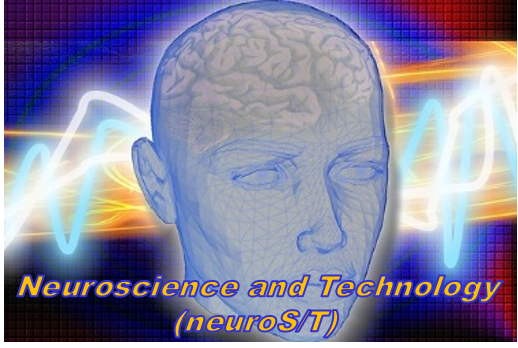 Significant developments in neuroscience and technology (neuroS/T) are employable in warfare, intelligence, and national security (WINS) operations.1 As has been shown, these tools and methods are certainly viable for use in kinetic warfare;2 however, we believe that it is far more feasible, facile – and therefore of greater value – to consider and pursue the brain sciences for producing “mass disruption” effects in non-kinetic engagements.3 Weaponry (i.e., means of contending against others) can be generally categorized as “Hard” and “Soft.” “Hard” weaponized applications of neuroS/T include pharmacological agents, microbes, organic toxins, and devices (i.e., “drugs, bugs, toxins, and tech”). Research, development, and use of these weapons are regulated by current international conventions and treaties, at least to some extent;4 and the scope and limitations of these treaties remain a focus of international discussion, contention, and debate. But it is equally important to acknowledge the capability that can be leveraged by employing forms of neuroS/T as “soft” weapons, to influence multinational, if not global economic, social, and political stability as well as balances of power.
Significant developments in neuroscience and technology (neuroS/T) are employable in warfare, intelligence, and national security (WINS) operations.1 As has been shown, these tools and methods are certainly viable for use in kinetic warfare;2 however, we believe that it is far more feasible, facile – and therefore of greater value – to consider and pursue the brain sciences for producing “mass disruption” effects in non-kinetic engagements.3 Weaponry (i.e., means of contending against others) can be generally categorized as “Hard” and “Soft.” “Hard” weaponized applications of neuroS/T include pharmacological agents, microbes, organic toxins, and devices (i.e., “drugs, bugs, toxins, and tech”). Research, development, and use of these weapons are regulated by current international conventions and treaties, at least to some extent;4 and the scope and limitations of these treaties remain a focus of international discussion, contention, and debate. But it is equally important to acknowledge the capability that can be leveraged by employing forms of neuroS/T as “soft” weapons, to influence multinational, if not global economic, social, and political stability as well as balances of power.
Moreover, with the growth of non-western countries’ (e.g., China’s) interests, investments, and activities in neuroS/T, it is important to note that differing cultural (and political) needs, values, philosophies, norms, and mores can and often do affect the ethical codes that guide and govern the conduct of scientific research. In some cases, these differing ethical standards may create opportunistic windows to expedite neuroS/T research, and advance outcomes and products to ultimately effect global markets. China has recognized the technical, social, medical, military, and political value of neuroS/T, prompting the fortification of current programs, and initiation of new programs in brain sciences that are aimed at broad translational use(s).5 Toward such ends, China has both stated intent and capability to use precision disruptive methods to target competitors’ vulnerabilities to incur multi-dimensional ripple effects to influence various spheres of economic, social and geo-political power.6
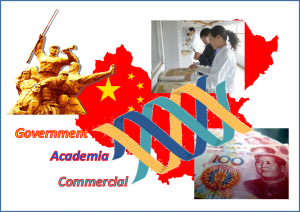
As we have stated in a previous blog and elsewhere,7 China operates (1) on longer, more protracted timetables (i.e., Five-Year Plans [FYPs]), and (2) with adept synergy via cooperative engagement of government, academia, and commercial sectors (i.e., the “triple helix”) that allows for the centralization and coordination of resources and personnel on agenda, and projects of prime national interest. These aspects of their regime enable coordination and productivity of politically motivated intent, research, and outcomes for a range of applications (including WINS operations).8 In essence, China has established a reciprocally supportive brain trust focusing upon advancing enterprises in brain science. We have identified three ways that China looks to non-kinetically leverage neuroS/T as a soft weapon on the world stage: (1) research tourism; (2) control of intellectual property; and (3) medical tourism. In these ways, China seeks to advance neuroS/T, as constituent to broader S/T, and economic initiatives to assume a hegemonic advantage and become a (if not the) global superpower.
Research Tourism
Research tourism is a strategy to attract both distinguished, experienced scientists (in most cases from Western countries) and younger scientists to contribute to and advance productivity, innovation, and prestige of China’s S/T (and other academic) enterprises. These efforts are evidenced in initiatives such as the Thousand Talents Program (launched in 2008) and other programs (e.g., Hundred Person Program, Spring Light Program, Youth Thousand Talents Program, etc.) that aim draw foreign researchers, incubate domestic talent, and incentivize the return and retention of Chinese scientists who have studied and/or worked abroad.9, 10 Such programs are supported and enthused by broad intramural cooperation of leading neurobiological research universities, and initiatives to formally (and financially) conjoin Chinese institutes to leading programs worldwide. For example, the IDG/McGovern Institute for Brain Research at Tsinghua University in Beijing works closely with Massachusetts Institute of Technology’s brain research institute.11 Additionally, in 2019, Hong Kong University of Science and Technology joined with Harvard Medical School, Stanford University School of Medicine, and University College London to engage in cooperative and collective neurodegenerative research and intend to open an institute in Hong Kong.12 These partnerships foster international collaboration to further therapeutics and other neuroS/T advances; however, it also augments China’s ability to even the proverbial “playing field” of the brain sciences for WINS applications.
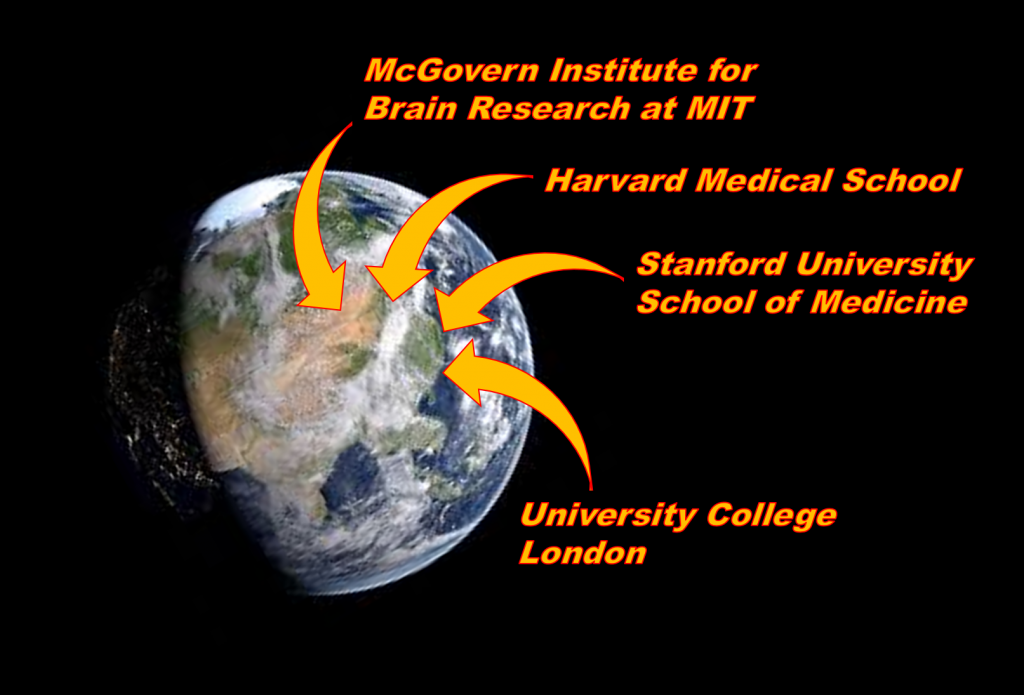
Intellectual Property Control
China has also leveraged intellectual property (IP) policy and law to advance (and veil) neuroS/T and other biotechnologies through: (1) exploiting their own patent process; (2) enabling compulsory licensing under their IP and patent laws; and (3) internationally enforcing their patent and IP rights. China’s system creates a “patent thicket” which, unlike the United States, emphasizes 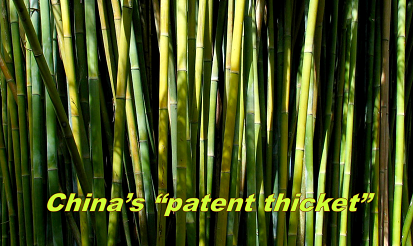 the end-utility of a concept rather than innovation in ideas. This in turn produces an abundance of patents, which are based on parts of other concepts or previous, completed patents. These IP laws allow China’s commercial entities to copy, or in some case, usurp foreign patent information, applications, and products. Furthermore, Chinese patent laws allow for complete seizure of international research and development (R&D) under certain conditions, which often remain vague (e.g., “for the benefit of public health”, “a major technological advancement”, etc.).13 A 2017 report by the Commission on the Theft of American Intellectual Property stated that China accounts for 87% of counterfeit goods stolen from United States companies.14 Taken together, such practices allow the Chinese government to acquire S/T for any political, economic, or WINS application.
the end-utility of a concept rather than innovation in ideas. This in turn produces an abundance of patents, which are based on parts of other concepts or previous, completed patents. These IP laws allow China’s commercial entities to copy, or in some case, usurp foreign patent information, applications, and products. Furthermore, Chinese patent laws allow for complete seizure of international research and development (R&D) under certain conditions, which often remain vague (e.g., “for the benefit of public health”, “a major technological advancement”, etc.).13 A 2017 report by the Commission on the Theft of American Intellectual Property stated that China accounts for 87% of counterfeit goods stolen from United States companies.14 Taken together, such practices allow the Chinese government to acquire S/T for any political, economic, or WINS application.
The recent global expansion of China’s commercial, academic, and economic institutions has established significant stakes in myriad international enterprises that are capable of realizing rapid and broad advances in China’s S/T R&D. Such use of law (i.e., what is referred to as “lawfare”) empowers  Chinese academic and corporate endeavors via economic and legal support provided by the PRC to align S/T R&D with explicit national directives and agendas to exercise international effect and dominance.15, 16 This can create market saturation of key products that are essential to multiple functions and domains of other countries’ infrastructure, economy, stability, and standing. As well, such products can be used for intelligence purposes to track particular domains and activities of individuals, groups, and communities. The proliferate infiltration of such products also establishes dependence upon China’s supply and maintenance of resources and renders these technologies (and the activities they serve) vulnerable to manipulation and control.
Chinese academic and corporate endeavors via economic and legal support provided by the PRC to align S/T R&D with explicit national directives and agendas to exercise international effect and dominance.15, 16 This can create market saturation of key products that are essential to multiple functions and domains of other countries’ infrastructure, economy, stability, and standing. As well, such products can be used for intelligence purposes to track particular domains and activities of individuals, groups, and communities. The proliferate infiltration of such products also establishes dependence upon China’s supply and maintenance of resources and renders these technologies (and the activities they serve) vulnerable to manipulation and control.
Medical Tourism
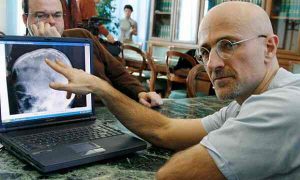
The capacity to advance and/or develop areas of biomedicine / biotechnology in ways that are not feasible elsewhere synergizes both a strong translational (“bench to bedside”) capability, and explicit as well as tacit attraction and solicitation of international individuals seeking interventions that are only available in China. These, at present, could range from the relatively sublime (e.g., using deep brain stimulation to treat drug addiction17) to the seemingly science fictional (e.g., the proposed body to head transplant to be conducted at Harbin Medical University in collaboration with Italian neurosurgeon Sergio Canavero18). Such enterprise may be fortified by research efforts that seek to expedite development of treatments for diseases for high global import and effect. More provocatively, research could also be directed toward producing agents that incur global effect, which could only be ameliorated through the use of specific interventions that are “made in China.”19 Initiatives to foster medical tourism are synergized by programs to promulgate China’s S/T in world markets, thereby strengthening multinational dependence on Chinese market influence. This enables reliance on products and services “made/delivered in China” in addition for those “made by China” for ubiquitous use elsewhere.20
Prompting the Questions…
Due to these tactics of economic infiltration and saturation, China can create power hierarchies that induce ‘bio-political’ strategically latent effects that influence real and perceived positional dominance and affect world order. Hence, the United States and its allies must:
(1) Recognize the reality – and gain insight to processes/mechanisms – of China’s ascendant S/T capability;
(2) Evaluate what current and near-term trends in S/T portend for global position, influence, and power; and
(3) Decide which option – and paths-to-effect – to accept and assume.
In sum, it prompts the questions:
– Should the U.S. and its allies be content to let China continue to rise in S/T capability, and become a co-superpower, thereby rivaling if not surpassing the global influence of the U.S. and the West?
Or…
– Should China’s current and planned activities in S/T prompt the U.S. and its allies to adopt renewed, new – or perhaps China’s own – strategies to increase investment, innovation, and enterprise to maintain sole superpower status?
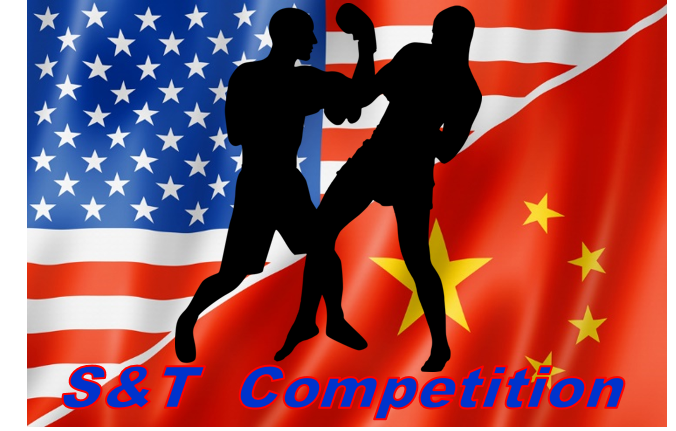
If you enjoyed this post, please also see:
BrAIn Gain > BrAIn Drain: Strategic Competition for Intellect
Designer Genes: Made in China? by Mr. Joseph DeFranco and Dr. James Giordano
The Importance of Integrative Science/Technology Intelligence (InS/TINT) to the Prediction of Future Vistas of Emerging Threats by Dr. James Giordano, CAPT (USN – Ret.) L. R. Bremseth, and Joseph DeFranco
China’s Drive for Innovation Dominance
Authors:
Joseph DeFranco is J5 Donovan Group Fellow in Biowarfare and Biosecurity, at U.S. Special Operations Command (USSOCOM). He is currently studying neuroscience in the College of Arts and Sciences, and biodefense at the Schar School of Policy and Government of George Mason University, VA, and formerly served on the staff of Congressman Donald S. Beyer (VA-08). His current research focuses upon the possible use of novel microbiological agents and big data as force-multiplying elements in non-kinetic, hybrid, and kinetic engagements, and the role of global agencies in biosecurity.
L.R. Bremseth (CAPT, USN SEAL [Ret]) serves as the Senior Special Operations Advisor for CSCI, a strategic support organization in Springfield, VA. He previously served as the Deputy Senior Director of the Integration Support Directorate (ISD) for the Department of the Navy (DON). As such, he was a key advisor to the Secretary, Under Secretary and Deputy Under Secretary of the Navy for sensitive activities. CAPT Bremseth was appointed to the Defense Intelligence Senior Level, and Director, Operations and Executive Director prior to his appointment as Deputy Senior Director, ISD. He retired from the Navy in 2006 with 29 years of service, during which he commanded SEAL Team EIGHT (1996-1998) and served a major command tour at Naval Special Warfare Group THREE (2003-2005).
Mad Scientist James Giordano, PhD, is Professor of Neurology and Biochemistry, Chief of the Neuroethics Studies Program, and Co-Director of the O’Neill-Pellegrino Program in Brain Science and Global Law and Policy at Georgetown University Medical Center. He currently serves as J5 Donovan Group Senior Fellow, Biowarfare and Biosecurity, U.S. Special Operations Command (USSOCOM), and as an appointed member of the Neuroethics, Legal, and Social Issues (NELSI) Advisory Panel of the Defense Advanced Research Projects Agency (DARPA). Previously, Dr. Giordano served as Senior Science Advisory Fellow of the Strategic Multilayer Assessment Group of the Joint Staff of the Pentagon; and was Senior Research Fellow and Task Leader for the EU Human Brain Project Subproject on Dual Use Brain Science.
Disclaimer: The views expressed in this blog are those of the authors, and do not necessarily reflect those of the Department of Defense, U.S. Special Operations Command, the Defense Advanced Research Projects Agency (DARPA), Department of the Army, Army Futures Command (AFC), or Training and Doctrine Command (TRADOC).
Acknowledgments:
This blog was adapted from the authors’ forthcoming work appearing in the Health Security journal, Strategic Studies Quarterly, and the Cambridge Quarterly of Healthcare Ethics. JG’s work is supported in part by funding from CSCI and Leadership Initiatives.
References:
1 For additional resources, please see:
Moreno J.D. (2006). Mind wars: Brain research and national defense.
Flower, R., Dando, M., Hay, A., Iverson, S., Robbins, T., Robinson, J. P., Rose, S., Stirling, A., Tracey, I., & Wessely, S. (2012). Brain Waves Module 3: Neuroscience, conflict and security.
Giordano J, Forsythe C, Olds J. Neuroscience, neurotechnology and national security: The need for preparedness and an ethics of responsible action. AJOB-Neuroscience 1(2): 1-3 (2010).
Forsythe C, Giordano J. On the need for neurotechnology in the national intelligence and defense agenda: Scope and trajectory. Synesis: A Journal of Science, Technology, Ethics and Policy 2(1): T5-8 (2011).
2 Giordano J. (ed.) Neurotechnology in National Security and Defense: Practical Considerations Neuroethical Concerns. Boca Raton: CRC Press (2015).
3 DeFranco J, DiEuliis D, Bremseth LR, Snow JJ, Giordano J (2019). Emerging Technologies for Disruptive Effects in Non-Kinetic Engagements. Journal of the Homeland Defense & Security Information Analysis Center, 6(2).
4 Gerstein, D., & Giordano, J. (2017). Rethinking the Biological and Toxin Weapons Convention?. Health security, 15(6), 638-641.
5 DeFranco J, Bremseth LR, Giordano J. The Importance of Integrative Science/Technology Intelligence (InS/TINT) to the Prediction of Future Vistas of Emerging Threats. Mad Scientist Laboratory Post #125, 13. March 2019. Available online at: https://madsciblog.tradoc.army.mil/125-the-importance-of-integrative-science-technology-intelligence-ins-tint-to-the-prediction-of-future-vistas-of-emerging-threats/
6 For example, please see: Bremseth L.R. & Giordano, J. (2019, July 4). The undeclared war America is losing. Retrieved from https://www.washingtontimes.com/news/2019/jul/4/why-fentanyl-must-be-designated-a-weapon-of-mass-d/
7 Chen C, Andriola J, Giordano J. (2018). Biotechnology, commercial veiling and implications for strategic latency: The exemplar of neuroscience and neurotechnology research and development in China. In: Davis ZD, Nacht M. (eds.) Strategic Latency Red, White and Blue: Managing the National and International Security Consequences of Disruptive Technologies. Livermore, CA: Lawrence Livermore Press, pp. 12-32.
8 DeFranco, J, Bremseth LR, Giordano J (2019). Dual- and Non-kinetic Use of Chinese Brain Science: Current Activities and Future Implications. In: Peterson N (ed.) The Future of Global Competition and Conflict. A Strategic Multi-Layer (SMA) Periodic Publication. Washington, DC: Strategic Multilayer Assessment Office, Office of the Secretary of Defense.
9 Engel, R. & Werner, K. (2019, July 14). China’s rising tech scene threatens U.S. brain drain as ‘sea turtles’ return home. Retrieved from https://www.nbcnews.com/tech/tech-news/china-s-rising-tech-scene-threatens-u-s-brain-drain-n1029256
10 Ibid, ref. 7.
11 For information on the IDG/McGovern Institute for Brain Research at Tsinghua University, please see: http://mcgovern.med.tsinghua.edu.cn/
12 Yan. (2019, January 16). HK to set up neuroscience research center with world’s top universities to tackle aging population. Retrieved from http://www.xinhuanet.com/english/2019-01/16/c_137749495.htm
13 Ibid, ref. 7.
14 For the complete 2017 update of the IP Commission report on the Theft of American Intellectual Property, please see: http://ipcommission.org/report/IP_Commission_Report_Update_2017.pdf
15 Ibid, ref. 8.
16 McFate S. (2019). The New Rules of War: Victory in the Age of Durable Disorder. NY: Harper-Collins.
17 ABC News. (2019, May 8). China conducting world-first trial of brain implants to treat drug addiction. Retrieved from https://www.abc.net.au/news/2019-05-08/china-trials-brain-implants-to-treat-drug-addiction/11090936
18 Jacobson, R. (2018, May 15). Two surgeons in China developing a method to transplant a human head. Retrieved from https://www.cnbc.com/2018/05/15/two-surgeons-in-china-developing-a-method-to-transplant-a-human-head.html
19 DeFranco J, Snow JJ, Giordano J. Dead Deer, and Mad Cows, and Humans (?) … Oh My! U.S. Army Training and Doctrine Command Mad Scientist Laboratory Post #143, 13. May 2019. Available online at: https://madsciblog.tradoc.army.mil/143-dead-deer-and-mad-cows-and-humans-oh-my/
20 For the United States Chamber of Commerce report on Made in China 2025, please see: https://www.uschamber.com/sites/default/files/final_made_in_china_2025_report_full.pdf

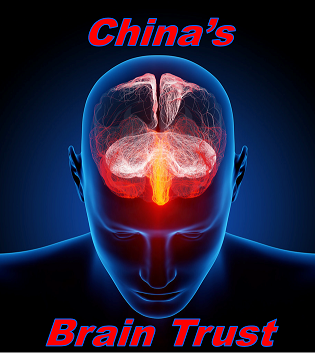


No. 167 is a thoughtful and insightful description. Perhaps it is useful to note that it is based on an assumption of Chinese (or any foreign nation) supremacy over US S&T. Supremacy is temporary and arguably more a matter of prestige than substance. Basic research is conceptual and as such should address principles and philosophy of a core discipline. International collaboration and cooperation has benefited all parties to these arrangements. Applied RDT&E and particularly military directed work has financial and national security advantage. Some of the most sensitive programs are international collaborations. USG procurement continues to buy from foreign governments without much discrimination of intent or source in many areas, unfortunately. It would seem beneficial to promote competitive programs that embrace international cooperation with US lab participants, perhaps with more discipline than shown today. Much as space R&D and many global efforts in commercial R&D, there is much to be gained. In the parlance of the authors it might be considered a countermeasure.